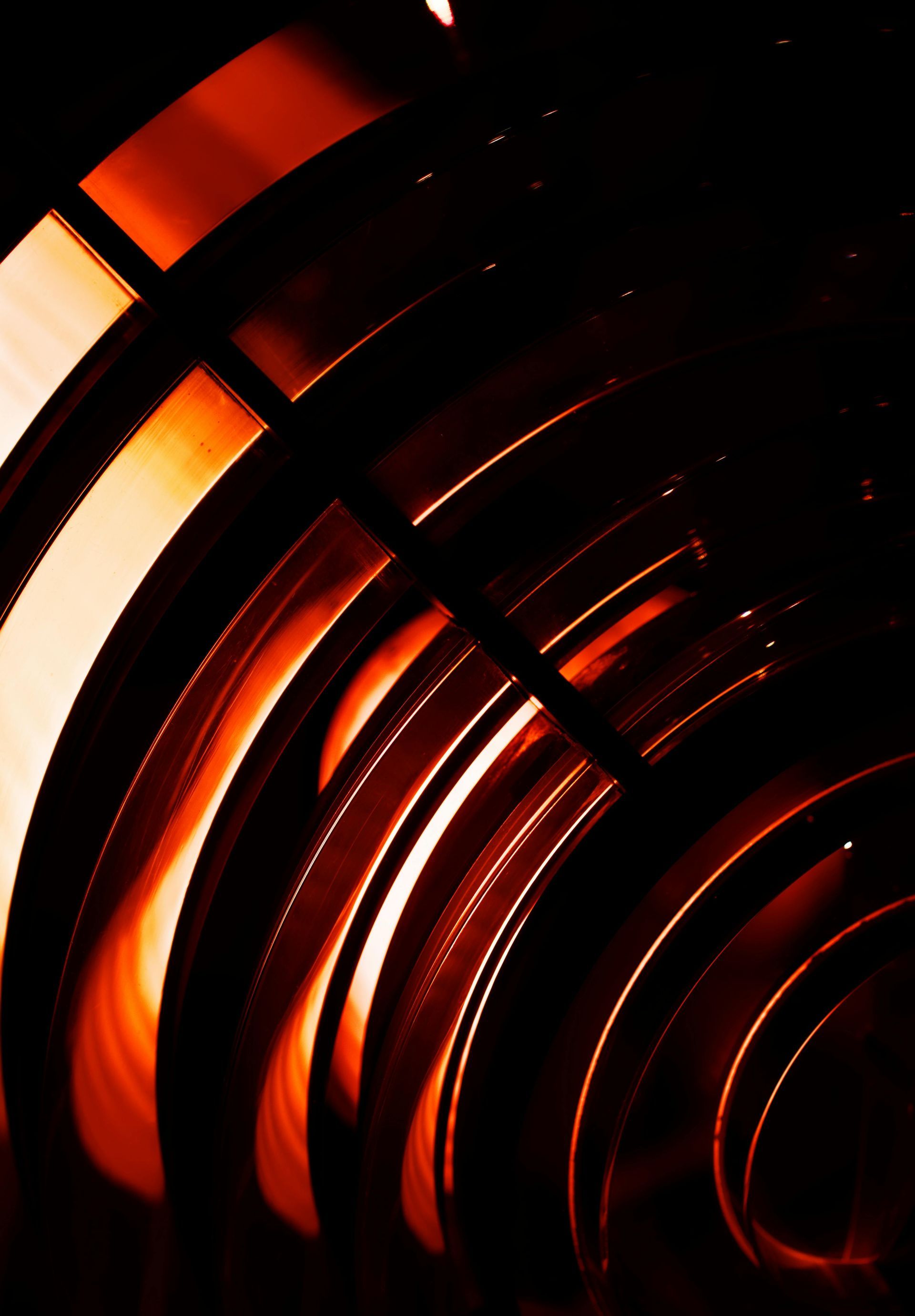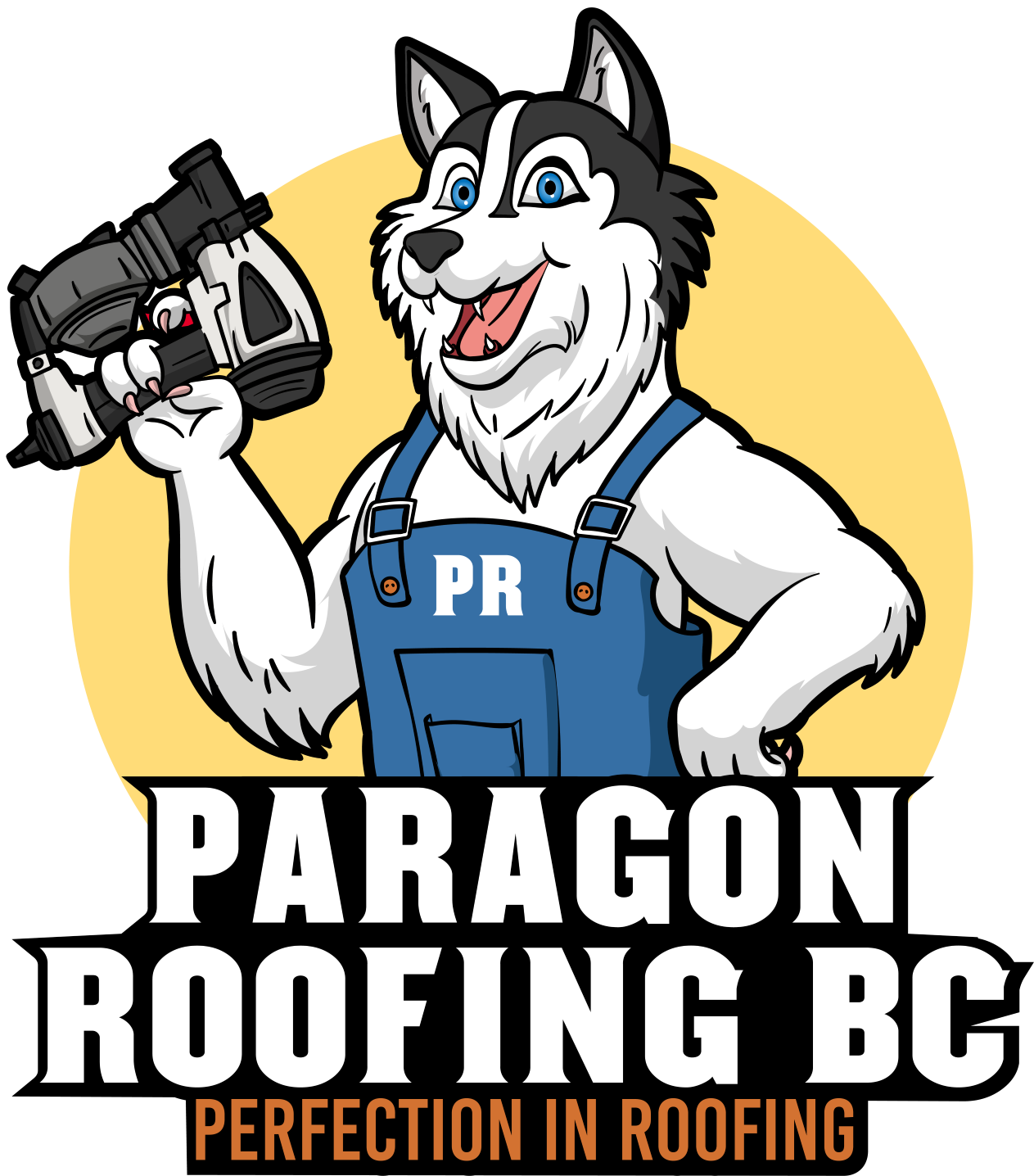What Type of Roof Is Best for Burnaby’s Sloped Homes?
By Harman Singh, Paragon Roofing BC
What Type of Roof Is Best for Burnaby’s Sloped Homes?
For Burnaby homeowners asking “What Type of Roof Is Best for Burnaby’s Sloped Homes?”, the front-runner is architectural asphalt shingles upgraded with an ice-and-water shield or, for longer service life, a standing-seam metal system—both shrug off coastal rain, resist moss, and meet local code.
- Choose heavy-duty architectural shingles or 24-gauge metal.
- Install full eave-to-ridge ventilation for year-round drying.
- Specify self-sealing ice membrane at edges & valleys.
- Flash every penetration in stainless or anodized aluminum.
- Schedule moss treatment every 24 months.
| Factor | Value | Note |
|---|---|---|
| Average annual rainfall | ≈1 600 mm | Demanding moisture load |
| Wind gust design | 110 km/h | Code reference BCBC 9.27 |
| Metal roof life | 40–70 yrs | Powder-coat finish |
Need local guidance? Our sloped roof experts in Burnaby have walked every ridge from Capitol Hill to Suncrest and distilled hard-won lessons into the roadmap below.
The Rain-Washed Riddle of Burnaby Roofs
Squint at Burnaby on a February afternoon: clouds spilling over the Coast Mountains, low-angled roofs drinking in drizzle, moss like emerald icing creeping wherever sunlight hesitates. In this Pacific Northwest micro-climate, the roof is not decoration; it is armour. Selecting the right material for a sloped home isn’t a Pinterest whim—it is the difference between twenty quietly dry winters and a sudden ceiling stain that spreads like bad news at midnight.
Below, I—Harman from Paragon Roofing BC, born under cedar rafters and raised on ridge-caps—will unpack every shingle, shake, and standing seam worth considering. Expect tangents, real-world anecdotes from Burnaby job sites, and the occasional meteorological aside. By the end you’ll have a blueprint, not just an article.
1. Meet Burnaby’s Climate Head-On
Rain defines us. Environment Canada logs ~1 600 mm of annual precipitation, with 165 wet days per year. Layer on salt-tinged air funnelled up Burrard Inlet and the sporadic freeze-thaw cycles that crack mediocre shingle tabs each January, and you’ve got a perfect storm of roofing stressors. Weight, water-shedding profile, fastener corrosion resistance, moss affinity—every variable matters.
Micro-stats from our own inspections (2023–2024):
- 73 % of premature asphalt failures traced to improper ventilation or organic-felt underlayment.
- 61 % of moss-infested roofs lacked zinc or copper strips at the ridge.
- Every cedar shake roof older than 25 years needed selective replacement planks after the 2024 atmospheric river event.
Data isn’t poetry, yet it whispers clear advice: durability, not trendiness, rules the North Road. Further reading on how coastal winds impact Burnaby roofs underscores the point.
2. Architectural Asphalt Shingles—Workhorse with Muscles
Remember the wavy, thin three-tabs your grandparents coaxed through two decades? Retire them. Architectural(a.k.a. laminate) shingles pack double-thick lamination, sculpted shadow lines, and a 3-D profile heavy enough (≈230 lb/square) to resist Burnaby’s gusty winter squalls.
Pros
- Cost-efficient:$6–8 / ft² installed.
- Colour diversity: From driftwood grey to Pacific charcoal.
- Repair-friendly: One bad tab? Pop, slip, nail, done.
Cons
- Lifespan plateau: Realistically 22–28 years in our moisture belt even with algae-resistant granules.
- Granule loss: Steep slopes above 9 / 12 accelerate shedding during heavy storms.
Best practice from our crew: pair synthetic breathable underlayment with a full-width ice-barrier three feet past the interior wall line. After the 2021 cold snap, only homes with that detail emerged icicle-free.
3. Standing-Seam Metal—The 70-Year Argument
Drive up Capitol Hill and you’ll spot a few linear, crisp-looking metal rooftops reflecting the powder-blue dawn like the hull of a sailboat. Those seams hide clipped panels anchored with concealed fasteners—no exposed screws, no compromised washers, no yearly reseal chore.
Why it thrives in Burnaby:
- Hydrokinetic profile: 1.5-inch vertical seams guide water straight to gutters, ignoring sideways rain.
- Moss hostility: Smooth PVDF coating denies spores a foothold; your neighbour’s moss scraper grows jealous.
- Fire peace-of-mind: On hillside lots bordering forested ravines, metal affords a Class A rating under ember attack.
Downside ledger: higher upfront ($12–16 / ft²). Yet amortised over five decades, yearly cost often undercuts asphalt. Plus, insurance carriers routinely shave premiums for metal installations—a subtle rebate many overlook.
4. Cedar Shake—Beautiful, Difficult, Almost Endangered
Cedar used to blanket Burnaby’s view-homes, redolent with the scent of the island forests. Unfortunately, “used to” is the keyword. The climatic twin punch of relentless damp and airborne mold counts cedar’s days. Untreated, shakes blacken within five rainy seasons; pressure-treated variants extend life but lose that honey-amber luminosity.
- Longevity: 18–25 years if meticulously maintained (bi-annual cleaning, fungicidal wash, re-oiling).
- Cost:$13–15 / ft² installed (premium grade, tapersawn).
- Eco-footprint: Sourced responsibly, yes; yet the maintenance chemicals offset green brownie points.
Unless you relish weekend skyladder therapy, consider cedar a heritage choice, not today’s default.
5. Synthetic Composite—The New Kid with Lab-Coated Credentials
Brands like Enviroshake and Brava pitch polymer mixes mimicking slate or cedar, boasting Class 4 hail resistance. On Burnaby’s West Ridge we installed a composite slate in 2022; a year later, no fade, no moss—encouraging. But long-term field data? Sparse. Underwriters cautiously classify the material; some insurers still interpret it as “plastic unknown.” Budget $9–12 / ft².
6. Clay & Concrete Tile—Weight vs. Seismic Reality
Tiles shrug at moss (glazed clay) and laugh at UV, but they weigh north of 900 lb/square. Burnaby sits in seismic zone 4; combining heavyweight roof mass with older stick-framed attics mandates an engineer’s letter. Retrofits often require rafter sistering. Add freeze-thaw spalling risk, and tiles usually bow out unless homeowners crave Mediterranean aesthetics enough to reinforce the skeleton.
7. The Sloped-Roof Angle: Why Pitch Governs Material Choice
| Pitch Range | Material Sweet Spot | Reason |
|---|---|---|
| 3–5 / 12 | Architectural asphalt or metal | Adequate shedding, economical |
| 6–8 / 12 | Architectural asphalt, cedar, composite | Visual texture visible from street |
| 9–15 / 12 | Metal, synthetic slate | High wind, aesthetic prominence |
Steeper slopes accelerate run-off but amplify wind uplift forces at eaves; heavier interlocking materials—metal clip-systems or double-thick asphalt—anchor best.
8. Ventilation & Underlayment: Unsung Heroes
Picture attic moisture as breath against cold glass. Without continuous air movement, condensation turns rafters into petri dishes. We mandate (and BCBC backs us) 1/300 ventilation ratio: for every 300 ft² of attic floor, 1 ft² net vent area. Ridge vents married with Smart-sensing gable fans maintain equilibrium.
Underlayment choices:
- Synthetic (polypropylene) —light, weave breathes, stable under UV for 180 days (handy when Pineapple Express storms delay shingle delivery).
- High-temp self-adhered membrane —sticks tenaciously at 40 °C summer deck temps; perfect under dark-coloured standing seam.
9. Fasteners & Flashings—The Small Things That Decide Big Lifespans
- Nails: Electro-galvanised for asphalt, stainless ring-shank for cedar.
- Screws: Climate-coated steel with EPDM gaskets for exposed-fastener panels (though we avoid those on residences).
- Flashings: 26-ga color-matched metal, hemmed edges, three-course sealed with polyurethane not asphalt mastic.
The 2023-24 winter taught us: where flashing laps faced the prevailing southeast wind without hemmed returns, wind-driven rain entered capillary-style. Post-incident fix: fold hems, rivet, re-caulk—lesson burned into muscle memory.
10. Cost Forecast: 2025 Pricing Benchmarks in Burnaby
| Material | Installed Price / ft² | 25-Year Cost of Ownership* | Notes |
|---|---|---|---|
| Architectural Asphalt | $7 (avg) | $17 (three resheets) | A-R shingle mid-tier |
| Standing-Seam Metal | $14 | $14 (no resheet) | 50-yr paint warranty |
| Cedar Shake | $14 | $26 (two restorations) | High maintenance |
| Synthetic Composite | $11 | $17 (unknown ageing) | Still new |
| Concrete Tile (engineered) | $16 | $20 (occasional crack) | Heavy |
*Assumes 3 % annual maintenance inflation.
11. Maintenance Cadence—The 24-Month Rule
Moss doesn’t wait for your calendar. We schedule a soft-wash plus zinc-sulfate ridge application every two years on asphalt and cedar builds. Metal & composite typically require only gutter cleaning. Neglect stretches may void manufacturer warranties—fine print few owners read until water finds the living room.
12. Case Study: Capitol Hill Retrofit, 2024
A 1968 split-level sporting curling organic shingles. Slope: 7.5 / 12. Challenges: minimal eave overhang, cedar fascia rot, open-bridging deck gaps.
- Re-sheet with 7/16 OSB to create continuous decking.
- Ice-barrier to 24″ upslope of warm wall.
- 26-ga Nautical Graphite standing-seam, 16″ coverage, 1.75″ seams.
- Ridge-vent integrated beneath z-closure, matched with Smart-soffit intakes.
Outcome: Energy audit post-retrofit indicated 9 % reduction in HVAC load thanks to improved attic airflow and solar reflectivity of the new coating. Homeowner recoup timeline projected at 10.6 years versus asphalt alternate.
13. Building Code & Permit Realities
Burnaby’s Building & Safety Department follows the BC Building Code but sprinkles local bylaws:
- Roof replacements exceeding 108 ft² require a permit if deck repairs are involved.
- Re-roofs must not reduce fire-resistance rating of existing assembly.
- Minimum attic ventilation .33 ft³/min per ft² of attic at 22 °C—translated by inspectors into the earlier 1/300 rule.
Skipping permits? A compliance notice can compel tear-off at seller’s expense upon property transfer. Penny wise, roof foolish.
14. Insurance & Resale Implications
In 2025 we tallied 34 resale inspections. Asphalt roofs older than 15 years triggered insurer “Five-year replacement” clauses, costing buyers higher premiums. Homes flaunting fresh metal or Class IV shingles sailed through underwriting. Translation: even if you plan to sell, premium materials pay social dividends.
15. Sound, Snow, and Solar Panels—Secondary Considerations
- Noise: Modern standing-seam with solid plywood and R-40 insulation measures only 3 dB louder during a deluge than asphalt, per our decibel meter at Royal Oak sample roof.
- Snow-sheds: Rare but possible Nor’easter dumps justify snow guards on slopes steeper than 8 / 12.
- Solar: Metal’s direct-to-seam clamp system outperforms asphalt’s stanchion penetrations. If PV is on your five-year horizon, metal is the friendlier substrate.
16. Decision Matrix—Choosing Your Burnaby Sloped Roof
- Budget under $20 k: Architectural asphalt, Class 3 impact rating.
- Own the home >15 yrs: Upgrade to standing-seam, harvest the longevity.
- Heritage aesthetic: Cedar shake, accept maintenance contract.
- Engineer in family & want novelty: Synthetic composite slate.
- Reinforced truss & Mediterranean heart: Concrete or clay tile, engineer sign-off mandatory.
17. Final Thoughts—Listen to the Rain
When the Pineapple Express barrels in from Hawaii and sponges across the North Shore mountains, you’ll hear the roof talk. A well-fastened metal system sings a faint staccato; asphalt offers a muted drum; cedar whispers. Yet the sound you will not hear—if you chose wisely—is dripping behind drywall.
Burnaby’s sloped homes thrive on roofs that outwit water, shrug at moss, and brave Pacific gales. Architectural asphalt and standing-seam metal remain top champions, each staking its claim on cost, longevity, or aesthetics. Your choice hinges on timeline, taste, and tolerance for clambering up ladders every other summer.
From our perch at Paragon Roofing BC, we’ve tarped emergencies at midnight and celebrated leak-free anniversaries decades later. We see patterns. Roofs fail where corners were clipped, where the vent count was rounded down, where the cheapest fasteners rusted in salty mist. Invest in the invisible—underlayment, airflow, flashing—and the visible crown will shine all the longer. Bookmark our guide to durable roofing options for older homes for a deeper dive.
Should the sky darken over Burnaby tomorrow, may your shingles lie flat, your valleys rush clear, and your attic breathe easy.




